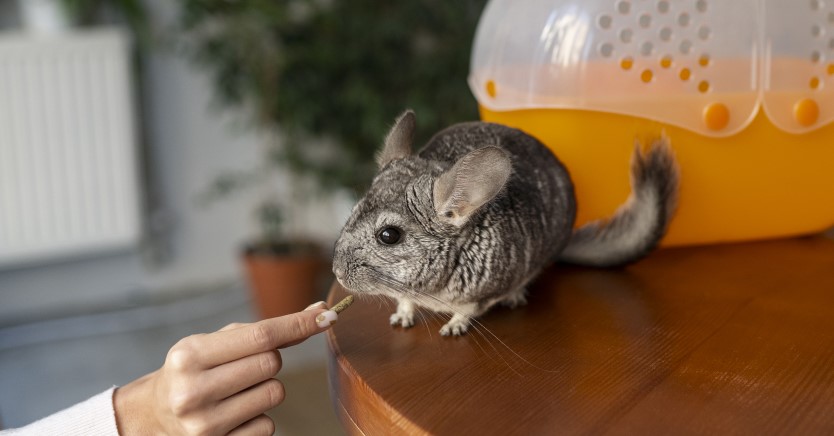From Shelter to Foster Home: What's Involved in This New Trend?
The new place for pet adoption.

The walls are bulging and the animal cries, deafening. The aisles, full of countless faces, some dull-eyed, others pleading, still others willfully demanding to be let out of their cages. The fact is, animal shelters are severely overcrowded, and though fed and kept warm, many of the animals they house are passed by again and again because what you saw was not what you got.
Animal shelters do their best, but the animals see the shelters as a frightening and highly stressful place with tons of strange smells, noises, people, and animals. In short, animals are not at their best at a time when many of their lives are literally on the line if they are not adopted.
But today, shelters are implementing innovative programs to give pets a better chance, such as doggy playgroups, communal cat rooms, and other enrichment activities to give the pets a healthier focus than the cages they otherwise reside in.
Enter the mushrooming foster care programs, where the trend is changing from in-shelter housing and into foster homes where animals have an almost sure shot at being adopted into a loving home. It can begin with small steps where animals are given a reprieve from the stress of the shelter to spend an overnight in a foster home or be allowed to go on a field trip. These strategies help, but a full-fledged foster program involves people who step up and offer their homes to an animal awaiting adoption.
Benefits of Fostering for Dogs
The benefits for dogs of being fostered are countless. Once out of a shelter and into a caring home, dogs who were aggressive or who hid in the corner of their cage, experienced miraculous transformations. Dogs in foster care get better care, mainly since they have one or two sets of human eyes focusing on them rather than getting lost in the shuffle at the shelter.
Benefits of Fostering for You
It's difficult to count the number of benefits fostering offers for foster homes and families. Here are just a few of the benefits you'll receive as a foster parent:
It is a completely giving act to offer your home to an animal you don't know.
Pets are known to help alleviate stress and loneliness as well as improve overall health.
You're making a difference in helping an animal find its forever home.
Fostering enables you to have a "trial run" to see if you're ready to take on a pet. ("Foster failures" are a common result of fostering a pet.)
Sign up Process
Every shelter will have a variation on the sign-up theme, but most require some or all the following:
An application that typically includes a description of your living arrangements, pet history, other pets currently living with you, lifestyle, working situation, and veterinarian's name.
- Telephone interview
- Names of references
- Home inspection: In the age of Covid, home inspections were carried out electronically.
When communicating with the shelter representative, be sure to tell them what type of dog or cat you'd prefer. This is true primarily of dogs, such as big, small, active, young, old, etc. The biggest challenge with today's fostering programs is finding enough foster homes, so the chances are that if you apply, you will be accepted.
Support
Everyone in the family needs to be on board with fostering to share the responsibilities of caring for the pet. This includes your existing pets.
You will also need the support of the shelter, which will be handled differently from one shelter to another. You may be assigned a foster "buddy" who will be there to guide, help, and answer your questions. Many shelters will have a manual with instructions for handling different situations. Some will have one or two staff members at the shelter who will respond to your questions.
The Beginning
So, you've been approved and are about to welcome your foster pet into your home. Preparations are necessary and include:
- Inquire about any dietary needs your foster may have and make sure he has the right food.
- Bowls: make sure he has his own food and water bowls, preferably new.
- Ensure there is a collar and leash for dogs
- Get a good, preferably wire, crate
- Fill the crate with cozy, soft bedding
- Purchase new toys and bones to chew
- Get room dividers, such as a baby gate
- Buy grooming tools for long-haired cats and dogs
- Have poop bags
When Your Foster Arrives
A cat may keep herself hidden for a day or two – a perfectly normal response to being in a new environment
A dog needs to be kept separate from any of your own dogs for several days to a week. Let them sniff each other through a gate until they know each other.
The pet may not be hungry for a day or two, also normal, but if a lack of appetite continues for more than a few days, call the shelter to alert them.
Emergencies
Emergencies happen but be prepared with how the shelter wants you to handle them. If an emergency happens during business hours, you will likely call the shelter for instructions. However, the tricky part is what happens if something happens off-hours? Some things to keep in mind until you can get help.
- Try to keep the pet still.
- What is your assessment of the situation?
- Is the animal critical in some way?
- Does the pet have a fever?
- Are the pet's gums white or blue?
- Is the pet eating or drinking?
- Check the stool and urine for blood.
Your Responsibilities
Your role as a foster is a serious one, and there are several responsibilities you will be charged with to ensure an animal's welfare. The environment for the pet needs to be always healthy and safe. You may be asked to transport the animal to appointments and the shelter. You're expected to cuddle and socialize with the pet to prepare him for his forever family. Exercise and stimulation! Shelter pets have been cooped up with very little of either. All these things are what will transform him into a loving pet.
The End
Now for the hard part. If you are a proud foster, fail, saying goodbye is not an issue. But it's the farewell that keeps many prospective fosters from stepping up. Your contacts at the shelter, as well as fellow fosters, can help you with this. But think: every time you give up one dog to a warm, caring home, it leaves room for another pet to leave the shelter into an environment that can help him succeed in starting a new and happy life.
Ready to start saving money on pet wellness care?
Then take a look at Mint Wellness, the pet wellness plan that provides fast reimbursement on routine pet care. Save on vaccinations, wellness exams, preventatives, dental, and more!
Learn More


